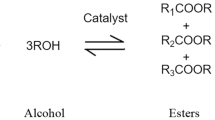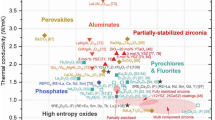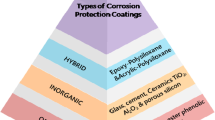Abstract
Ionic liquids are expected to become increasingly popular lubricants as they feature a number of attractive properties. This investigation focused on sulfate and phosphate anion-based ionic liquids and the improvement in lubricating performance with the addition of these anions. However, the detailed lubricating mechanism and effect of alkyl chain length on tribochemical reactions are unclear. This study investigates tribochemical reaction processes using a quadrupole mass spectrometer (Q-MS) and X-ray photoelectron spectroscopy. Seven types of ionic liquids: 1-ethyl-3-methylimidazolium hydrogensulfate ([EMIM][HSO4]), 1-ethyl-3-methylimidazolium methylsulfate ([EMIM][MSU]), 1-ethyl-3-methylimidazolium ethylsulfate ([EMIM][ESU]), 1-ethyl-3-methylimidazolium n-octylsulfate ([EMIM][OSU]), 1-ethyl-3-methylimidazolium dimethyl phosphate ([EMIM][DMP]), 1-ethyl-3-methylimidazolium diethyl phosphate ([EMIM][DEP]), and 1-ethyl-3-methylimidazolium dibutyl phosphate ([EMIM][DBP]), were selected as lubricants. The friction coefficient of sulfate anion-based ionic liquids increased as their alkyl chain lengthened. However, wear scar diameter in this case showed the opposite tendency. The friction coefficient and wear scar diameter of phosphate anion-based ionic liquids increased with an increase in the alkyl chain length. Q-MS results indicated that the main outgassing components during sliding were the cation components, whereas the anion remained on the sliding surface and formed a tribofilm. The ionic liquids with short alkyl chains reacted with the sliding surface easily and led to very low friction. However, corrosive wear occurred in the case of the sulfate anion. On the other hand, anions with long alkyl chains underwent gradual tribochemical reactions because that led the mitigation of contact with nascent surface. The phosphate-based ionic liquids with long alkyl chains were unable to cause the lubricating effect due to low reactivity.







Similar content being viewed by others
References
Siedlecka, E.M., Czerwicka, M., Stolte, S., Stepnowski, P.: Stability of ionic liquids in application conditions. Curr. Org. Chem. 15, 1974–1991 (2011)
Enders, F., El Abedin, S.Z.: Air and water stable ionic liquids in physical chemistry. Phys. Chem. Chem. Phys. 8, 2101–2116 (2006)
Maton, C., Vos, N.D., Stevens, C.V.: Ionic liquid thermal stabilities: decomposition mechanisms and analysis tools. Chem. Soc. Rev. 42, 5963–5977 (2013)
Wikes, J.S.: A short history of ionic liquids—from molten salts to neoteric solvents. Green Chem. 4, 79–80 (2002)
Rogers, R.D., Seddon, K.R.: Ionic liquids–solvents of the future? Science 302, 792–793 (2003)
Seddon, K.R.: Ionic liquids: a taste of the future. Nat. Mater. 2, 363–365 (2003)
Ye, C., Liu, W., Chen, Y., Yu, L.: Room-temperature ionic liquids: a novel versatile lubricant. Chem. Commun. 21, 2244–2245 (2001)
Kamimura, H., Kubo, T., Minami, I., Mori, S.: Effect and mechanism of additives for ionic liquids as new lubricants. Tribol. Int. 40, 620–625 (2007)
Bermúdez, M.D., Jiménez, A.E., Sanes, J., Carrión, F.J.: Ionic liquids as advanced lubricant fluids. Molecules 14, 2888–2908 (2009)
Sanes, J., Carrión, F.J., Bermúdez, M.D., Martínez-Nicolás, G.: Ionic liquids as lubricants of polystyrene and polyamide 6-steel contacts, preparation and properties of new polymer-ionic liquid dispersions. Tribol. Lett. 21, 121–133 (2006)
Liu, W., Ye, C., Gong, Q., Wang, H., Wang, P.: Tribological performance of room-temperature ionic liquids as lubricant. Tribol. Lett. 13, 81–85 (2002)
Viesca, J.L., García, A., Battez, A.H., González, R., Monge, R., Fernández-González, A., Hadfield, M.: FAP− anion ionic liquids used in the lubrication of a steel–steel contact. Tribol. Lett. 52, 431–437 (2013)
Suzuki, A., Shinka, Y., Masuko, M.: Tribological characteristics of imidazolium-based room temperature ionic liquids under high vacuum. Tribol. Lett. 27, 307–313 (2007)
Jiménez, A.-E., Bermúdez, M.-D.: Ionic liquids as lubricants for steel-aluminum contacts at low and elevated temperatures. Tribol. Lett. 26, 53–60 (2006)
Kondo, Y., Yagi, S., Koyama, T., Tsuboi, R., Sasaki, S.: Lubricity and corrosiveness of ionic liquids for steel-on-steel sliding contacts. J. Eng. Tribol. 226, 991–1006 (2012)
Placio, M., Bhushan, B.: A review of ionic liquids for green molecular lubrication in nanotechnology. Tribol. Lett. 40, 247–268 (2010)
Watanabe, S., Takiwatari, K., Nakano, M., Miyake, K., Tsuboi, R., Sasaki, S.: Molecular behavior of room temperature ionic liquids under lubricating condition. Tribol. Lett. 51, 227–234 (2013)
Swatloski, R.P., Holbrey, J.D., Rogers, R.D.: Ionic liquids are not always green: hydrolysis of 1-butyl-3-methylimidazolium hexafluorophosphates. Green Chem. 5, 361–363 (2003)
Wamser, C.A.: Hydrolysis of fluoboric acid in aqueous solution. J. Am. Chem. Soc. 70, 1209–1215 (1948)
Arias-Pardilla, J., Espinosa, T., Bermudez, M.D.: Ionic liquids in surface protection. Electrochem. Ion. Liq. 2, 533–561 (2015)
Kawada, S., Watanabe, S., Kondo, Y., Tsuboi, R., Sasaki, S.: Tribochemical reactions of ionic liquids under vacuum conditions. Tribol. Lett. 54, 309–315 (2014)
Totolin, V., Minami, I., Gabler, C., Brenner, J., Dörr, N.: Lubrication mechanism of phosphonium phosphate ionic liquid additive in alkylborane–imidazole complexes. Tribol. Lett. 53, 421–432 (2014)
Kondo, Y., Koyama, T., Tsuboi, R., Nakano, M., Miyake, K., Sasaki, S.: Tribological performance of halogen-free ionic liquids as lubricants of hard coatings and ceramics. Tribol. Lett. 51, 243–249 (2013)
Shah, F.U., Glavatskih, S., Oleg, N.A.: Boron in tribology: from borates to ionic liquids. Tribol. Lett. 51, 281–301 (2013)
Okubo, H., Watanabe, S., Tadokoro, C., Sasaki, S.: Effects of concentration of zinc dialkyldithiophosphate on the tribological properties of tetrahedral amorphous carbon films in presence of organic friction modifiers. Tribol. Int. 94, 446–457 (2016)
Okubo, H., Watanabe, S., Tadokoro, C., Sasaki, S.: Effects of structure of zinc dialkyldithiophosphates on tribological properties of tetrahedral amorphous carbon film under boundary lubrication. Tribol. Int. 98, 26–40 (2016)
Okubo, H., Tadokoro, C., Sasaki, S.: Tribological properties of a tetrahedral amorphous carbon (ta-C) film under boundary lubrication in the presence of organic friction modifiers and zinc dialkyldithiophosphate (ZDDP). Wear 332–333, 1293–1302 (2015)
Minami, I., Inada, T., Sasaki, R., Nakano, H.: Tribo-chemistry of phosphonium-derived ionic liquids. Tribol. Lett. 40, 225–235 (2010)
Somers, A.E., Biddulph, S.M., Howlett, P.C., Sum, J., MacFarlane, D.R., Forsyth, M.: A comparison of phosphorus and fluorine containing IL lubricants for steel on aluminium. Phys. Chem. Chem. Phys. 14, 8224–8231 (2012)
Xiao, H., Guo, D., Liu, S., Pan, G., Lu, Z.: Film thickness of ionic liquids under high contact pressures as a function of alkyl chain length. Tribol. Lett. 41, 471–477 (2011)
Jiménez, A.E., Bermúdez, M.D.: Ionic liquids as lubricants of titanium-steel contact. Part 3. Ti6Al4V lubricated with imidazolium ionic liquids with different alkyl chain lengths. Tribol. Lett. 41, 237–246 (2010)
Spikes, H.: The history and mechanisms of ZDDP. Tribol. Lett. 17, 469–489 (2004)
Totolin, V., Ranetcais, N., Hamciuc, V., Shore, N., Dörr, N., Ibanescu, C., Simionescu, B.C., Harabagiu, V.: Influence of ionic structure and tribological properties of polu (dimethylsiloxane–alkylene oxide) graft copolymers. Tribol. Int. 67, 1–10 (2013)
Lu, Q., Wang, H., Ye, C., Liu, W., Xue, Q.: Room temperature ionic liquid 1-ethyl-3-hexylimidazolium-bis(trifluoromethylsulfonyl)-imide as lubricant for steel–steel contact. Tribol. Int. 37, 547–552 (2004)
Zhao, W., Pu, J., Yu, Q., Zeng, Z., Wu, X., Wue, Q.: A novel strategy to enhance micro/nano-tribological properties of DLC film by combining micro-pattern and thin ionic liquids film. Colloids Surf. A 428, 70–78 (2013)
Nelson, A.J., Glenis, S., Frank, A.J.: XPS and UPS investigation of PF6 doped and undoped poly 3-methyl thiophene. J. Chem. Phys. 87, 5002–5006 (1987)
Wang, Z., Xia, Y., Liu, Z., Wen, Z.: Conductive lubricating grease synthesized using the ionic liquid. Tribol. Lett. 46, 33–42 (2012)
Wang, H., Lu, Q., Ye, C., Liu, W., Cui, Z.: Friction and wear behaviors of ionic liquid of alkylimidazolium hexafluorophosphates as lubricants for steel/steel contact. Wear 256, 44–48 (2004)
Mori, S., Suginoya, M., Tamai, Y.: Chemisorption of organic compounds on a clean aluminum surface prepared by cutting under high vacuum. ASLE Trans. 25, 261–266 (1982)
Wu, X., Cong, P., Mori, S.: Adsorption and reactions of HFC-134a gas on the nascent surface of alumina. Appl. Surf. Sci. 201, 115–122 (2002)
Lu, R., Mori, S., Kobayashi, K., Nanao, H.: Study of tribochemical decomposition of ionic liquids on a nascent steel surface. Appl. Surf. Sci. 255, 8965–8971 (2009)
Acknowledgements
This work was supported by a Grant-in-Aid for JSPS Fellows No. 15J05958 and JSPS KAKENHI Grant Numbers, JP16H02310, JP26630041.
Author information
Authors and Affiliations
Corresponding author
Rights and permissions
About this article
Cite this article
Kawada, S., Watanabe, S., Tadokoro, C. et al. Effects of Alkyl Chain Length of Sulfate and Phosphate Anion-Based Ionic Liquids on Tribochemical Reactions. Tribol Lett 66, 8 (2018). https://doi.org/10.1007/s11249-017-0962-1
Received:
Accepted:
Published:
DOI: https://doi.org/10.1007/s11249-017-0962-1




